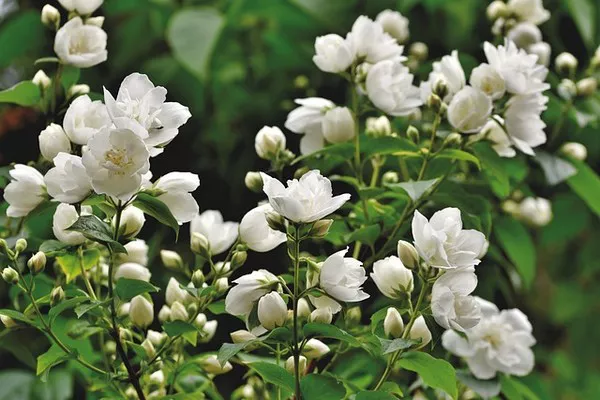Flowers have an ephemeral beauty that captivates us with their vibrant colors, delicate petals, and enchanting fragrance. However, their brief lifespan often leaves us yearning for ways to preserve their beauty long after they have withered. Fortunately, there are several methods available for preserving dead flowers, allowing you to enjoy their charm indefinitely. In this article, we will explore the various techniques and tools at your disposal to help you keep your cherished blooms in pristine condition.
Air Drying
Air drying is one of the simplest and most accessible methods for preserving dead flowers. This technique works best for flowers with sturdy petals and small, compact blooms such as roses, lavender, or statice.
Here’s how to air dry your flowers:
Choose flowers that are in peak condition, ideally just before they begin to wilt.
Remove excess foliage and trim the stems to your desired length.
Bundle the flowers together in small groups, securing them with a rubber band or twine.
Hang the bundles upside down in a cool, dry, and dark location with good airflow, like an attic or a closet. Ensure that the flowers do not touch each other.
Allow the flowers to air dry for about two to three weeks, or until they feel crispy to the touch.
Once fully dried, carefully remove any dust or debris with a soft brush.
Store the dried flowers in a vase or display them in a shadow box to showcase their beauty.
Pressing Flowers
Pressing flowers is a timeless method of preservation that results in flattened, beautifully preserved blooms. It’s an excellent choice for delicate flowers like daisies, pansies, or violets.
Here’s how to press flowers:
Choose fresh, unblemished flowers with flat petals.
Place a sheet of absorbent paper, such as blotting paper or parchment paper, inside a heavy book or flower press.
Arrange the flowers between the paper, making sure they do not overlap.
Add more sheets of absorbent paper on top of the flowers.
Close the book or press and secure it with heavy weights.
Store the press in a cool, dry place for several weeks to allow the flowers to dry and flatten.
Once the flowers are fully dried and flattened, carefully remove them from the press and arrange them in a frame or use them for various crafts.
Silica Gel Drying
Silica gel is a desiccant that absorbs moisture and is an excellent choice for preserving the vibrant colors of flowers. This method is ideal for flowers with delicate petals, like tulips, daffodils, or orchids.
Here’s how to use silica gel to dry flowers:
Fill a container with a layer of silica gel, enough to cover the bottom.
Trim the stems of your flowers and place them carefully on top of the silica gel.
Gently pour more silica gel over the flowers, ensuring they are completely covered but not touching each other.
Seal the container with an airtight lid and leave it undisturbed for about one to two weeks.
Carefully remove the flowers from the silica gel, using a soft brush to remove any excess particles.
Display your preserved flowers in a vase or create stunning arrangements for home decor.
Using a Microwave
For a quicker method of preserving flowers, consider using a microwave. This technique is best suited for small, robust flowers like daisies, marigolds, or larkspur.
Here’s how to microwave-dry flowers:
Place a layer of silica gel in a microwave-safe container.
Trim the flower stems to your desired length and insert them gently into the silica gel.
Microwave the container on low power (10-20%) in 30-second intervals. Check the flowers’ progress after each interval, and be cautious not to overheat them.
Once the flowers are dry, remove them carefully from the container and brush off any remaining silica gel.
Display your microwave-dried flowers as desired.
See Also: A Guide to Microwaving Dry Flowers: Preserving Nature’s Beauty
Wax Dipping
Wax dipping is a unique and creative way to preserve dead flowers while giving them a glossy, translucent appearance. It works well for flowers like roses, hydrangeas, or peonies.
Here’s how to wax dip your flowers:
Melt paraffin wax or a wax blend in a double boiler until it reaches a temperature of around 150-160°F (65-71°C).
Carefully dip the flowers into the melted wax, ensuring they are fully coated.
Gently shake off any excess wax and allow the flowers to cool for a few seconds.
Hang the wax-coated flowers upside down until the wax hardens completely.
Once hardened, use a soft cloth to buff the flowers, giving them a glossy finish.
Store your wax-dipped flowers in a dry, cool place, away from direct sunlight, to maintain their beauty.
Conclusion
Preserving dead flowers allows us to hold onto the memories and the beauty they represent long after they’ve faded in the vase. Whether you choose the traditional method of air drying, the delicate art of pressing, the vibrant colors of silica gel drying, the quick and easy microwave technique, or the unique wax dipping method, each approach offers a chance to extend the life of your cherished blooms. Experiment with different methods to find the one that best suits your needs and preferences, and enjoy the enduring beauty of your preserved flowers for years to come.


